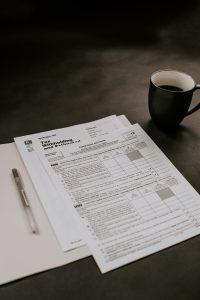Support and resistance are two of the most important concepts in forex trading. They are used to identify key levels in the market where price action is likely to stall or reverse. These levels are crucial for traders to identify as they can be used to make trading decisions and manage risks. In this article, we will discuss how to set up support and resistance forex.
What are Support and Resistance?
Support and resistance are price levels that are significant in the forex market. Support is the price level at which buyers are expected to enter the market, whereas resistance is the price level at which sellers are expected to enter the market. These levels are determined by the market’s supply and demand dynamics.
Support levels are identified as lows on a chart, where price has bounced off and moved back up. Resistance levels are identified as highs on a chart, where price has bounced off and moved back down. The more times a level is tested, the stronger it becomes. This is because traders are watching these levels and are more likely to take action when price reaches them.
Why are Support and Resistance Important?
Support and resistance levels are important because they provide traders with clues about the market’s future direction. When price approaches a support level, traders expect price to bounce back up. When price approaches a resistance level, traders expect price to fall back down.
Traders use support and resistance levels to identify potential entry and exit points for trades. For example, a trader may look to buy at a support level, with a stop loss below the level. If the level holds, the trader can expect price to move back up and potentially make a profit. Similarly, a trader may look to sell at a resistance level, with a stop loss above the level. If the level holds, the trader can expect price to move back down and potentially make a profit.
How to Set Up Support and Resistance in Forex
Setting up support and resistance levels is relatively easy. The first step is to identify the timeframe you want to trade on. It could be the daily chart, the four-hour chart, or even the one-hour chart. Once you have identified the timeframe, you can start looking for key levels on the chart.
To identify support levels, look for areas where price has bounced off and moved back up. These levels are usually found at previous lows on the chart. To identify resistance levels, look for areas where price has bounced off and moved back down. These levels are usually found at previous highs on the chart.
Once you have identified the key support and resistance levels, you can mark them on the chart. You can do this by drawing horizontal lines across the chart at the relevant price levels. You can also use technical indicators such as moving averages or trend lines to help identify key levels.
It is important to remember that support and resistance levels are not static. They can change over time as the market dynamics change. Therefore, it is important to regularly review and adjust your support and resistance levels based on new information.
Conclusion
Support and resistance levels are crucial for forex traders as they provide important clues about the market’s future direction. By identifying key levels on the chart, traders can make informed trading decisions and manage risks effectively. Setting up support and resistance levels is relatively easy and can be done by identifying key levels on the chart and marking them with horizontal lines or technical indicators. Regularly reviewing and adjusting these levels is important to ensure they remain relevant and accurate.





